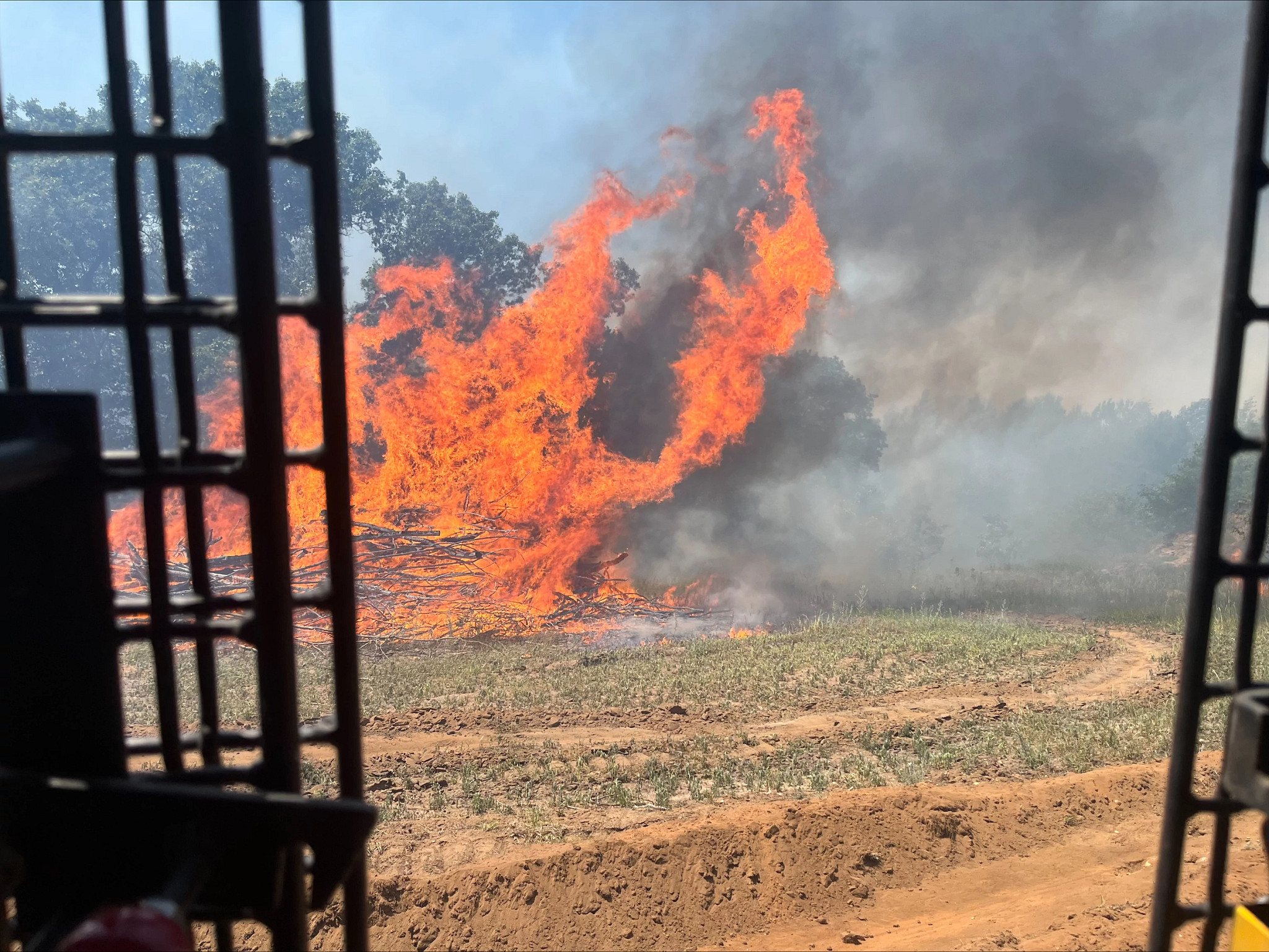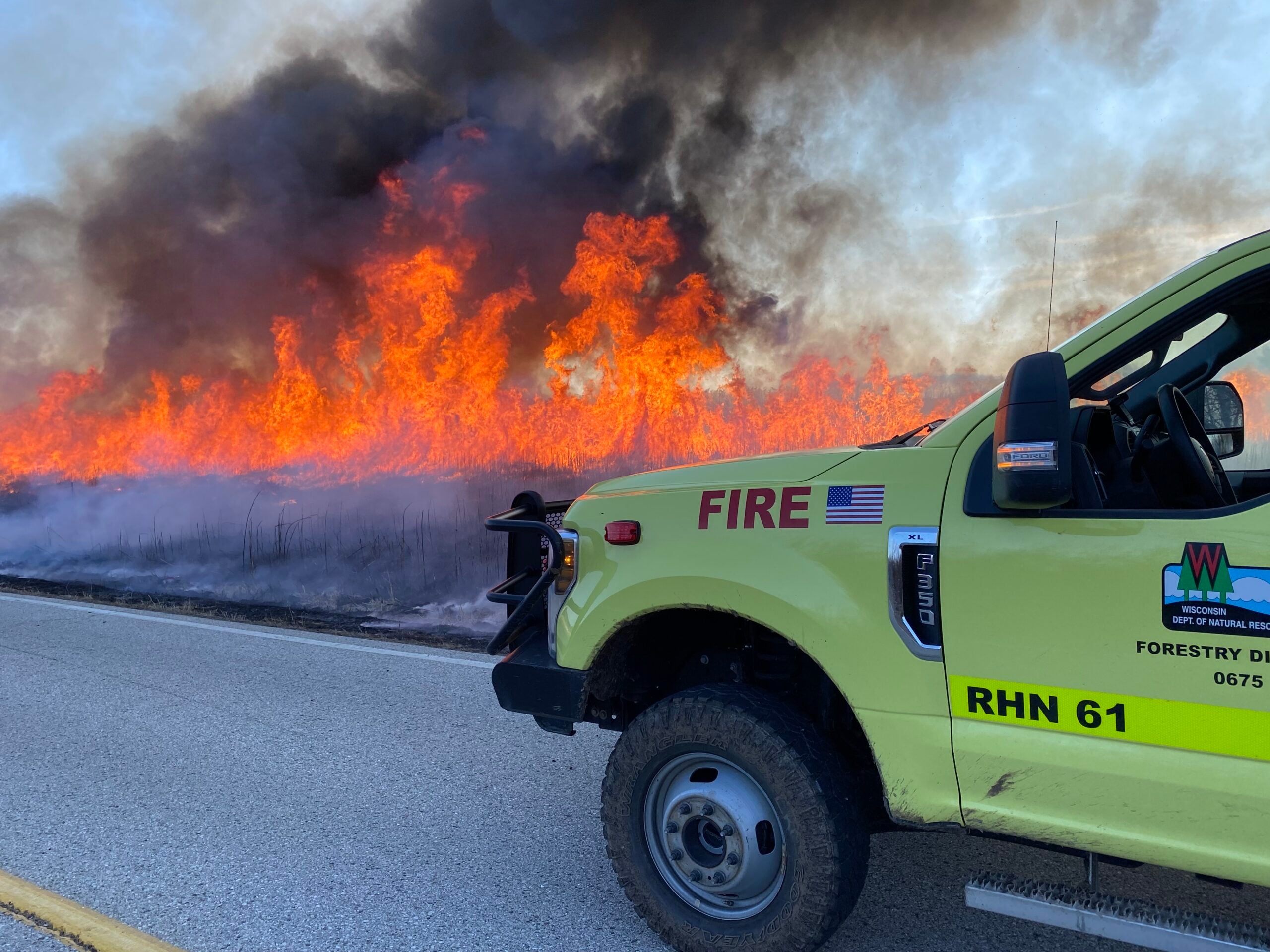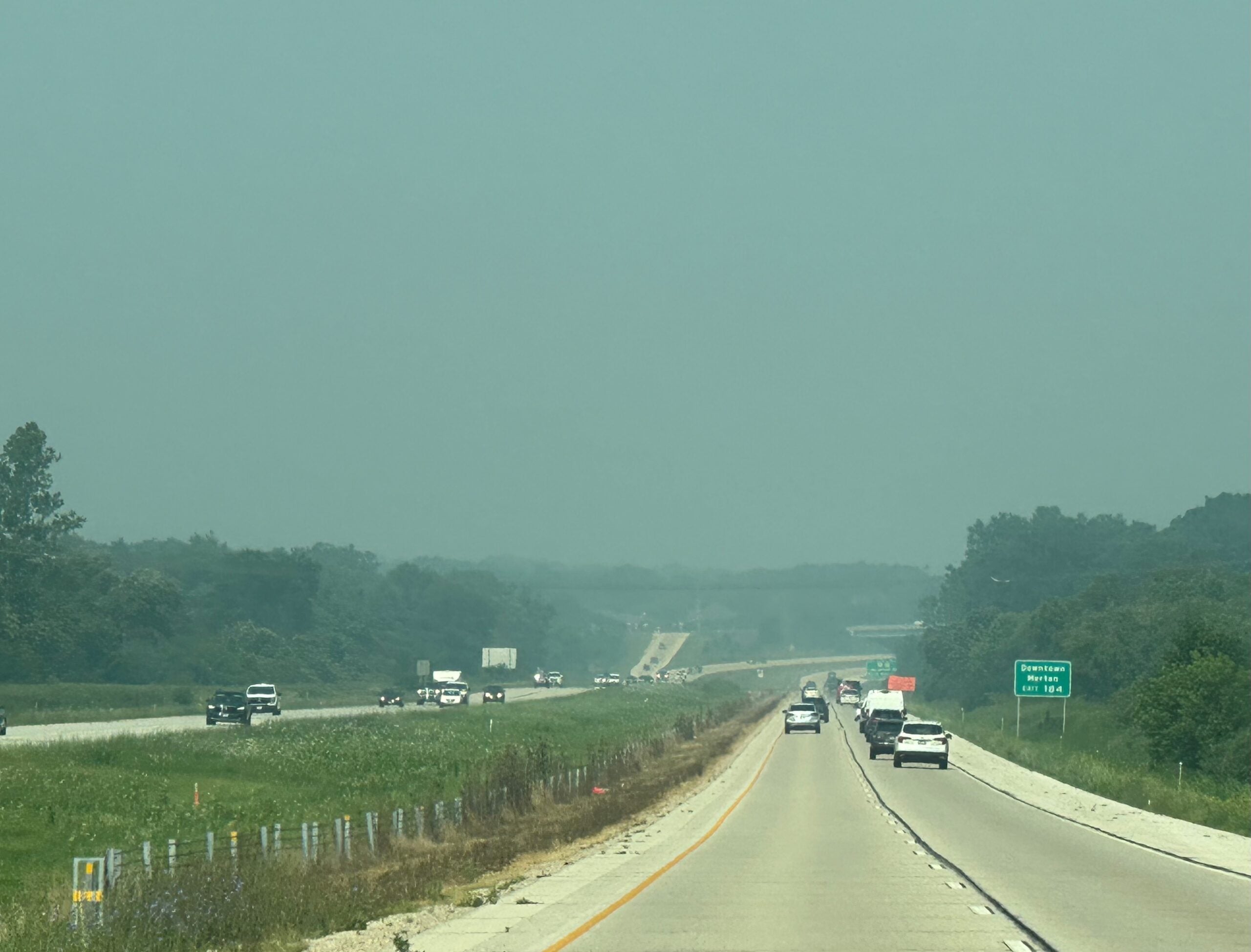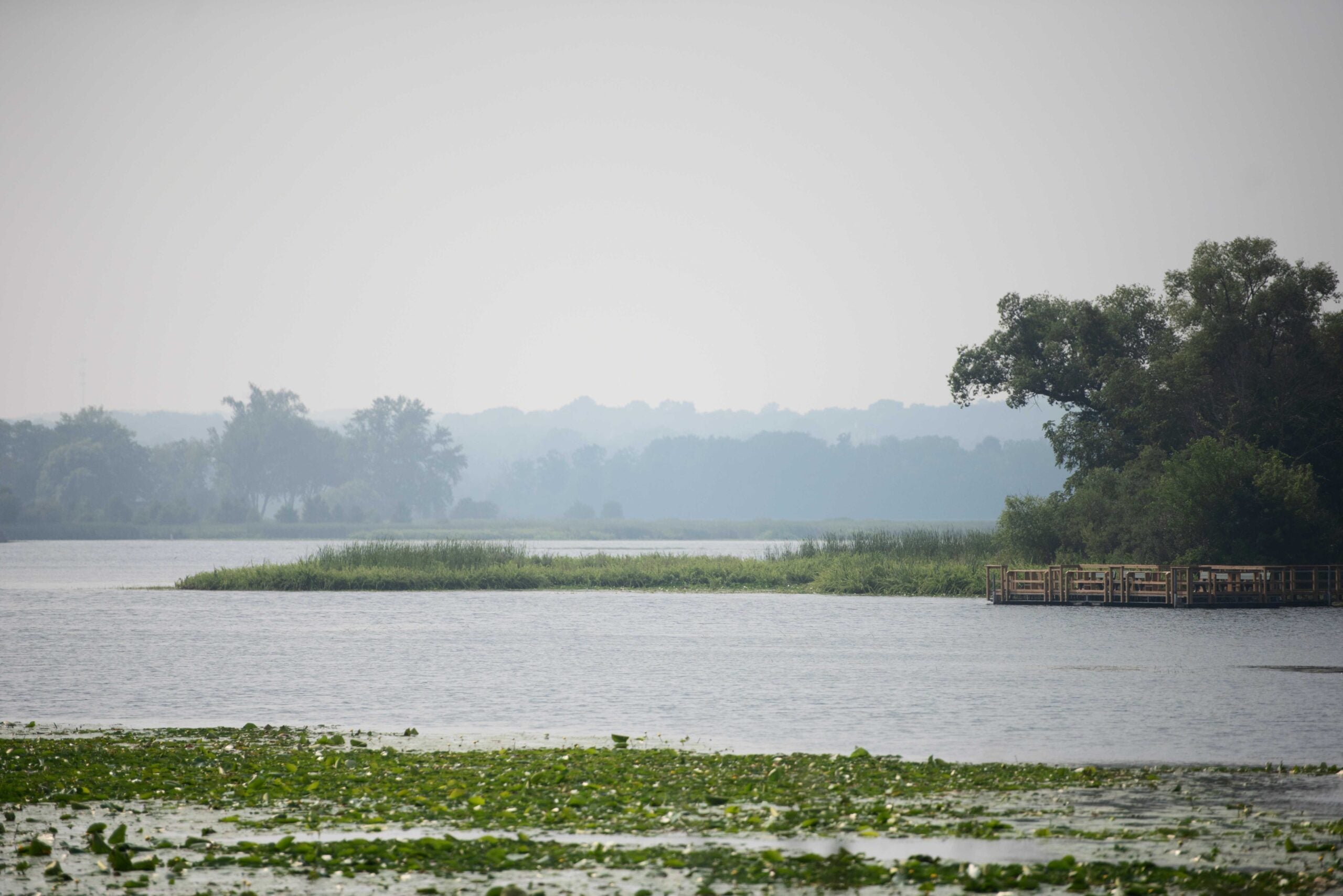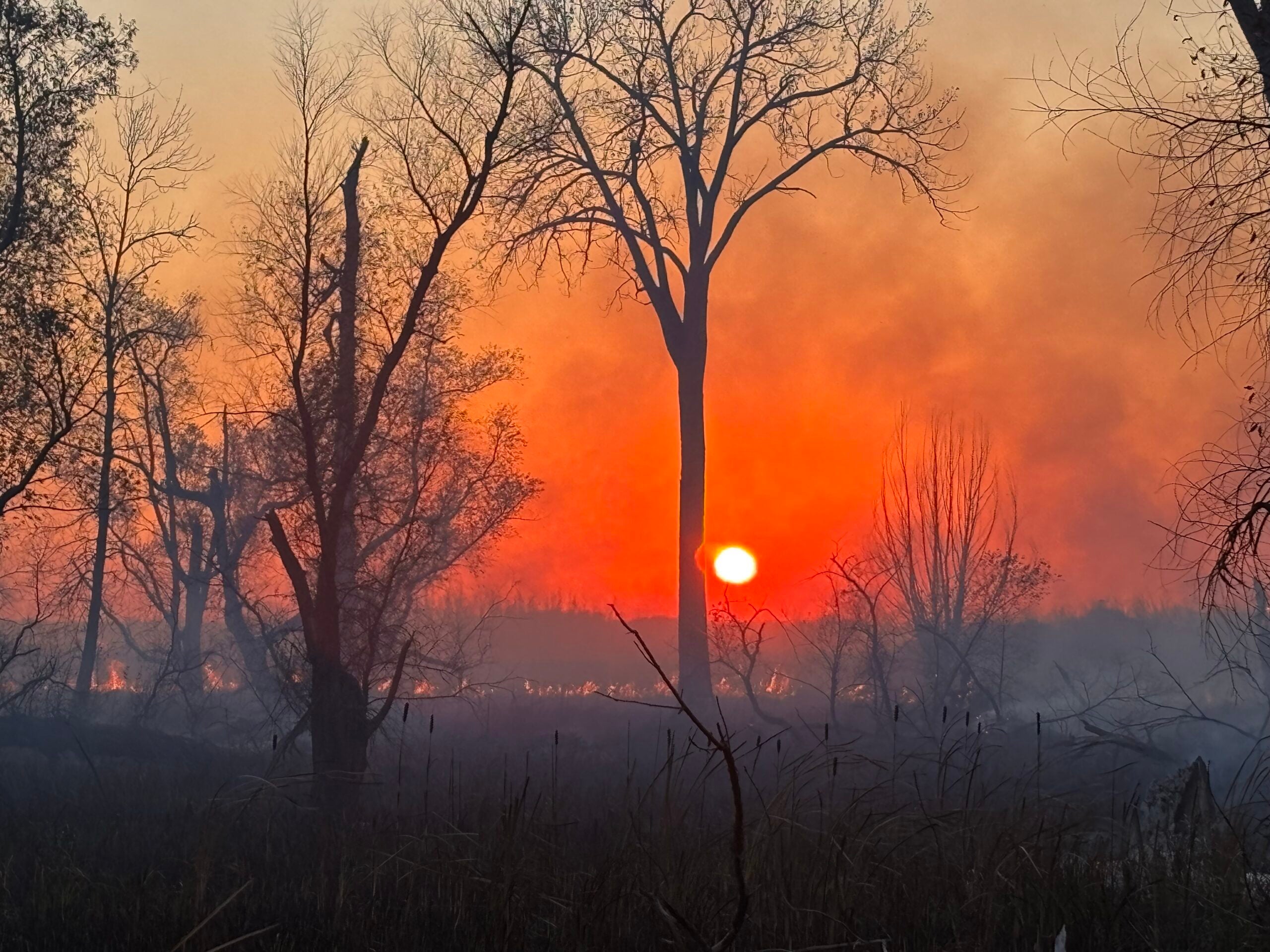About 250 more wildfires than normal have ignited across Wisconsin so far this year due to ongoing drought conditions, according to the Wisconsin Department of Natural Resources.
As of Thursday, the agency’s wildfire dashboard showed the state has seen 871 fires that have consumed nearly 4,400 acres to date. The 10-year average for this time of year is 614 fires and roughly 1,800 acres burned, according to data shared with the Natural Resources Board on Wednesday.
“Prior to this, I think we had a drought stretch in 2012, (which) was the last time we were in this position,” Catherine Koele, the DNR’s wildfire prevention specialist, told the board. “But, again, this year…it’s been up and down. We see a little bit of rain. The grasses green up a little bit, and then it dries out again. So we’ve been on this roller coaster.”
News with a little more humanity
WPR’s “Wisconsin Today” newsletter keeps you connected to the state you love without feeling overwhelmed. No paywall. No agenda. No corporate filter.
Wildfires have already consumed almost five times as many acres as last year when 923 fires blazed during the state’s fire season. Koele said the number of acres burned this year has largely been driven by large-scale fires in Monroe and Waushara counties, including the Arcadia Fire that spanned more than 3,000 acres at Fort McCoy.
Despite that, Koele said there’s been a steady decline in the number of wildfires on average over the last three decades.
“That is good news for us,” Koele said. “A lot of this is, I think, technology, rapid response time, keeping those fires small. We’re having wetter springs. That’s just the reality of it.”
Spring is peak fire season in Wisconsin. Since 1950, the state has been growing warmer and wetter with average precipitation increasing about 5 inches, according to a report from the Wisconsin Initiative on Climate Change Impacts. The past decade has been the wettest on record, and the state is likely to continue to trend toward wetter springs.
Even so, the report also found climate change has decreased summer rainfall in recent decades across northern Wisconsin. That, combined with longer growing seasons and warmer air temperatures, is increasing the vulnerability to wildfires of the state’s northern forests.
Koele said it’s unusual to see large-scale fires in July like one that burned around 730 acres in Waushara County.
“This is kind of a long, drawn-out fire season,” Koele said.
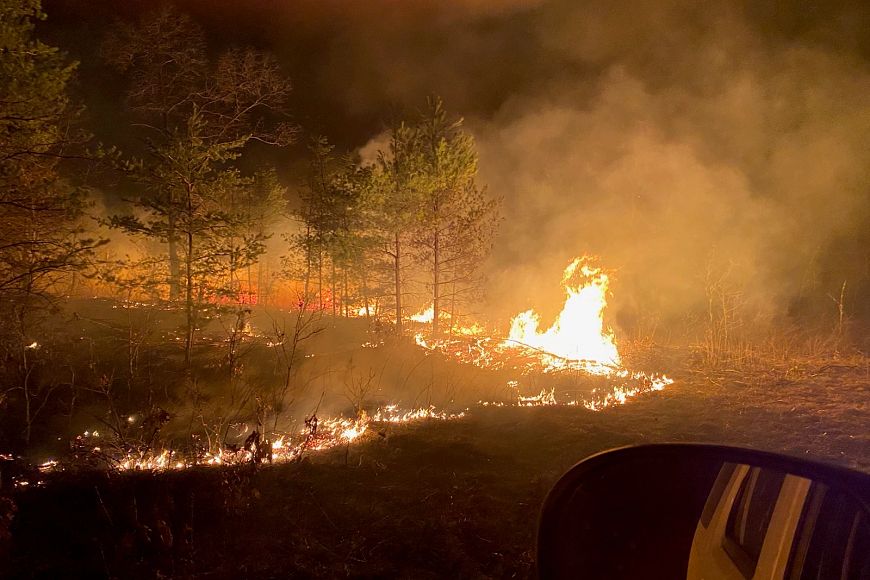
Debris burning is typically the number one cause of fires in Wisconsin during the spring. However, around 30 percent of blazes this year have been sparked by equipment. The DNR has had staff on standby up to 35 percent more than average this year, and Koele said the agency has about 600 personnel who are qualified to assist with fires.
She said recent rains have made areas less prone to fire, but she said it will take above normal rainfall to ease fire conditions statewide. Data from the most recent U.S. National Drought Monitor shows almost half the state is under severe drought conditions across mostly southern and northwestern Wisconsin. Around 98 percent of the state is facing abnormally dry conditions.
After a dry week, extreme drought expanded across south-central Wisconsin and long term precipitation deficits continue. How do conditions look by you? Submit a report here https://t.co/43DgR2xxpA #wiwx #drought pic.twitter.com/lwWAHl8g45
— NWS Milwaukee (@NWSMilwaukee) August 10, 2023
Despite drought conditions, the DNR has met its goal to conduct about 26,000 acres of prescribed burns across the state this year.
Prescribed burns at Fort McCoy leading up to the Arcadia Fire prompted questions from Democratic U.S. Sen. Tammy Baldwin in April about how the military assesses the risk of those activities and coordinates with state agencies. During a tour of Fort McCoy on Thursday, Baldwin said she hoped to speak with officials about the fire.
“It was very alarming. The very same day, the governor said it was a high alert for the possibility of wildfires,” Baldwin said. “It was supposed to be a controlled fire, and it went out of control.”
A spokesperson for Fort McCoy told WPR Thursday that the U.S. Army Reserve is investigating the cause of the fire. While the blaze was mostly contained to the base, the DNR has previously said more than 60 acres of private property burned. The fire threatened 167 homes and damaged three.
Joe Pulvermacher is the fire chief for the city of Fitchburg and president for the Wisconsin State Fire Chiefs Association. He said people can help prevent fires by seeking burn permits and reducing overgrowth that’s too close to buildings.
“You want to make sure that the fuel sources that generally contribute to wildfires are (not) close to an area that you want saved,” Pulvermacher said.
He said the biggest concern he’s heard from members this year is how the drought is driving fires during hot weather. He said warmer temperatures prompt precautions to ensure that firefighters aren’t being driven to exhaustion while controlling wildfires. Pulvermacher said some also expressed concern earlier in the season about whether the state was sending resources to fight Canadian wildfires without considering fire risks at home.
“We have to take into consideration our response at home first,” Pulvermacher said. “We’re not going to send resources to another area when we don’t have our own personal area protected.”
That goes both ways. Koele said two Canadian provinces, Michigan, and Minnesota share firefighting resources under the Great Lakes Forest Fire Compact.
“Unfortunately, the Great Lakes region — they’ve all been in fire season,” Koele said. “We haven’t been able to get a lot of support from our Great Lakes partners this year.”
Editor’s note: Hope Kirwan contributed reporting for this story.
Wisconsin Public Radio, © Copyright 2025, Board of Regents of the University of Wisconsin System and Wisconsin Educational Communications Board.

